Coffee beans Brazil Coffee beans Brazil semi-sun treatment Flavor taste characteristics
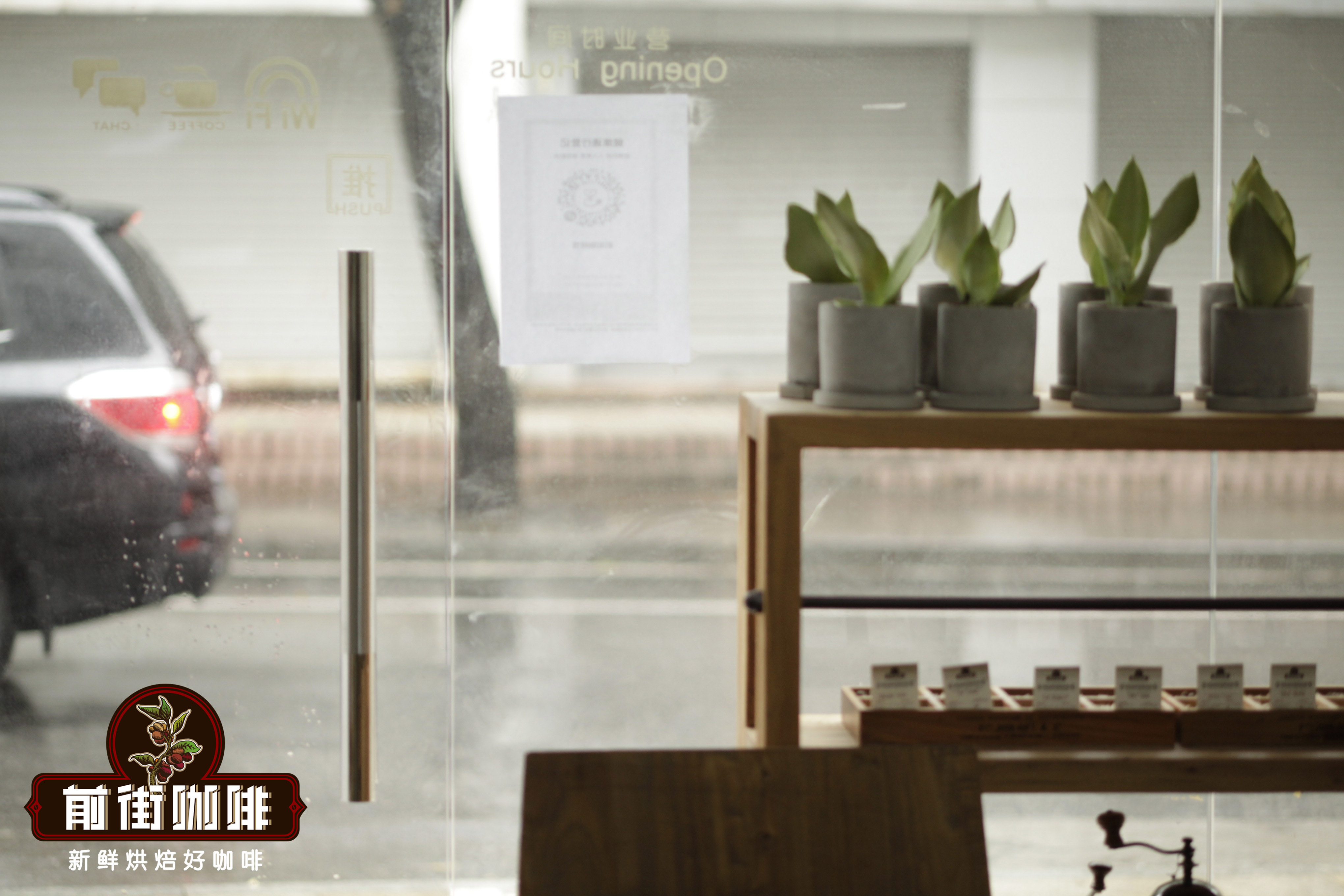
Professional coffee knowledge exchange more coffee bean information please follow the coffee workshop (Wechat official account cafe_style)
Most of the individual coffee beans in the boutique coffee market come from Latin America, of which Brazil has the highest output of coffee beans in the world, but there are not many famous single coffee beans in this area. this is also because most of the Brazilian coffee estates are only a few hundred meters above sea level, even on the flat ground. this kind of exposure planting method makes the coffee fruit grow faster, but the flavor development is not complete. And the density of beans, that is, the so-called hardness is not as good as plateau beans, the sour taste is obviously low, the flavor is monotonous, so it is rarely used to make high-quality single-product coffee beans, what are the Brazilian individual coffee beans? What is this kind of exposure treatment like? then Qianjie coffee will come to popularize science for everyone.
Planting conditions in coffee producing areas of Brazil
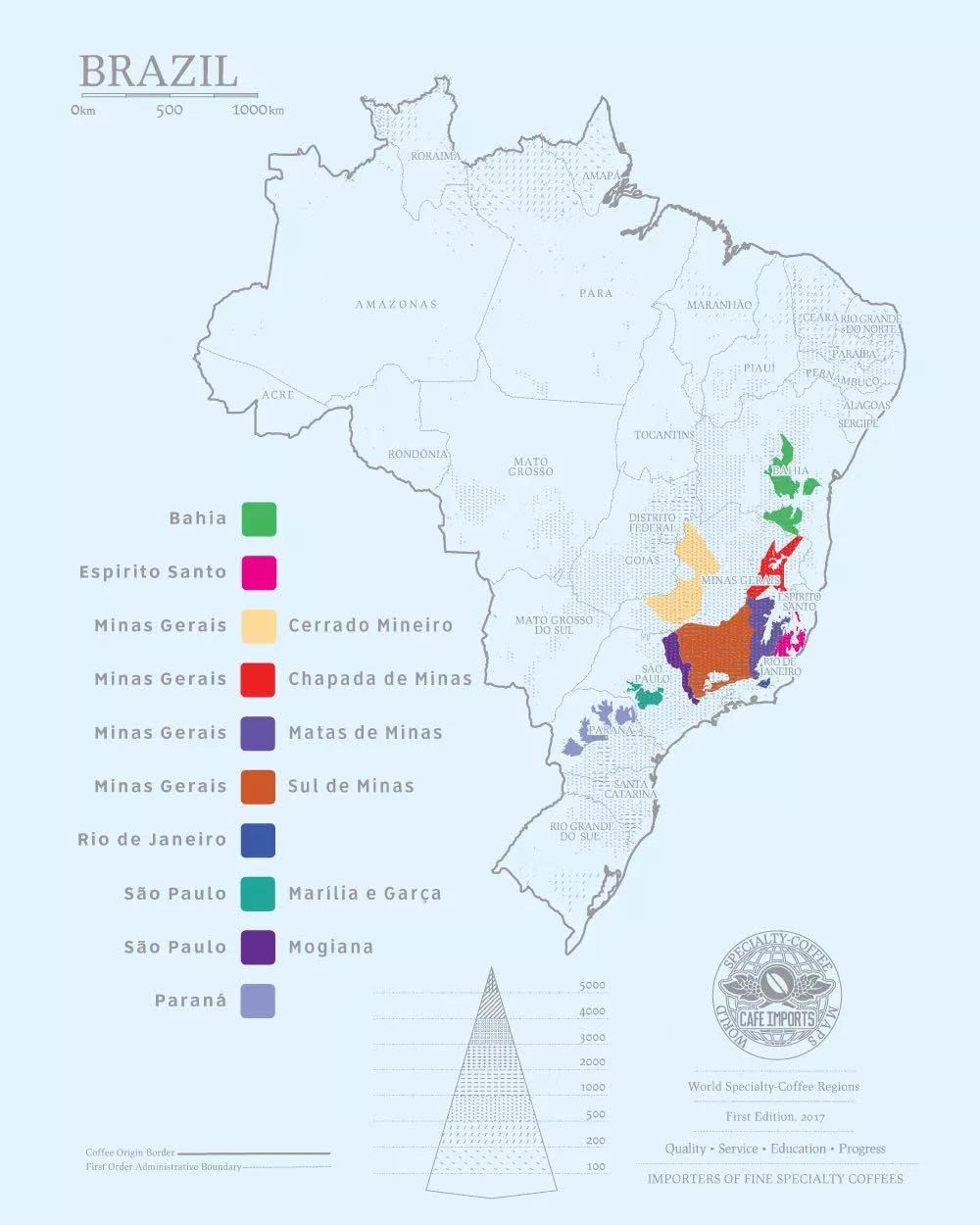
Brazil is located in the Latin American region of the Western Hemisphere, located in the eastern part of South America and on the west coast of the Atlantic Ocean, bordering all countries on the South American continent except Ecuador and Chile; most of its territory lies between the equator and the Tropic of Cancer. It is the most tropical country in the world. The territory has a tropical rain forest climate and a tropical prairie climate. The superior tropical natural conditions are very suitable for the growth and production of tropical cash crop coffee.
However, as mentioned above in Qianjie Coffee, Brazilian coffee is generally grown in flatter areas. in order to adapt to local conditions, Brazilian landlords have developed improved Arabica coffee trees that do not require highland or shade decades ago, which can be planted on plains or grasslands and directly exposed to the sun, which is different from the traditional higher altitude shade cultivation.
What about the Brazilian coffee bean treatment?
According to Qianjie Coffee, it is known that there are sun treatment, half-sun treatment and water washing treatment at the same time in Brazil, and the judgment method is mainly based on the dry and humidity conditions of the farms in each producing area, thus showing the best flavor in each producing area, which is very diverse.
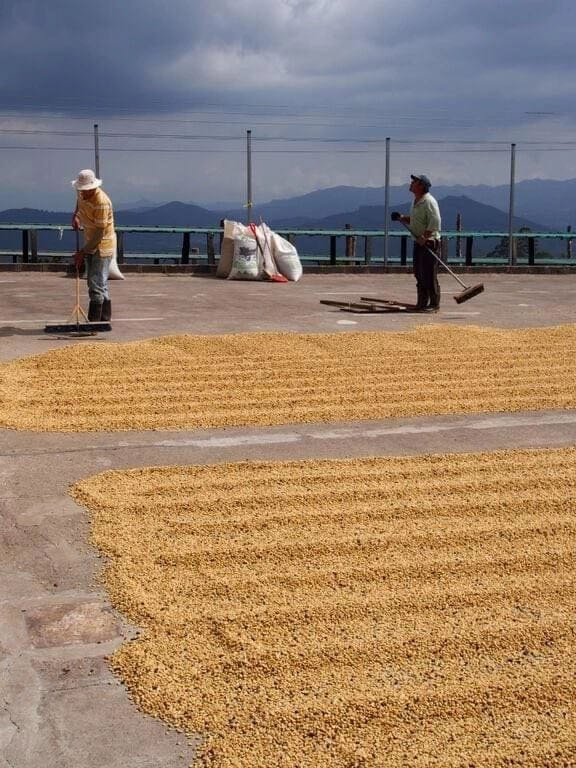
Among them, PN (half-sun) treatment is one of the unique coffee treatments in Brazil, because Brazil is relatively dry according to the local climate conditions, so it has created a unique half-sun method to deal with raw coffee beans. Half-sun treatment can control the degree of pectin fermentation after peeling and meat removal. At the same time, this natural treatment similar to honey treatment makes the coffee taste more round, and the effect is between washing treatment and full-sun treatment. During the treatment, a small amount of water is used to remove the pulp and peel, and then the coffee is dried directly on the drying rack, which is constantly turned over to ensure that all the coffee is exposed to the sun. after several days of drying, mechanical drying is carried out to achieve the appropriate water content.
Half-sun treatment process:
1. First put the coffee fruit into a large water tank, remove the floating fruit, and then put the sunken fruit into the pulp sieving machine to remove the pulp. To better remove the immature fruit, it is more important to let the coffee beans dry in the sun no longer with pulp, but only wrapped in a layer of pectin, which is more helpful to control the subsequent fermentation process.
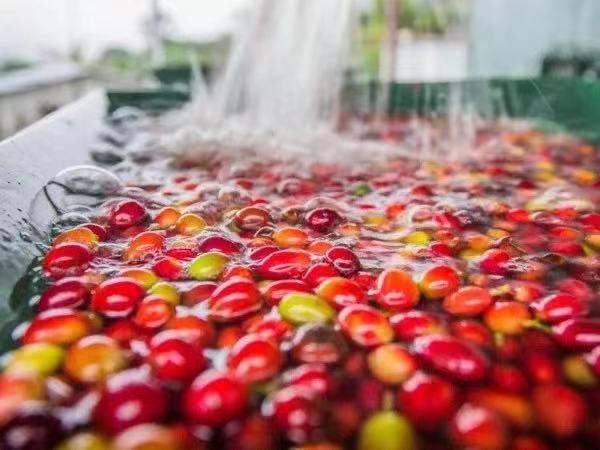
two。 After the peel and pulp of the fruit is removed, you can see the yellow pectin, and the coffee fruit with pectin will be exposed to the sun (after the pulp of the coffee bean is removed, there will be a layer of sticky jelly called pectin. )
3. The water content of dried beans reached 10.5% Murray 12% to be shelled.
4. Finally, polishing and polishing are carried out before the beans are bagged and exported.
Characteristics of half-sun treatment
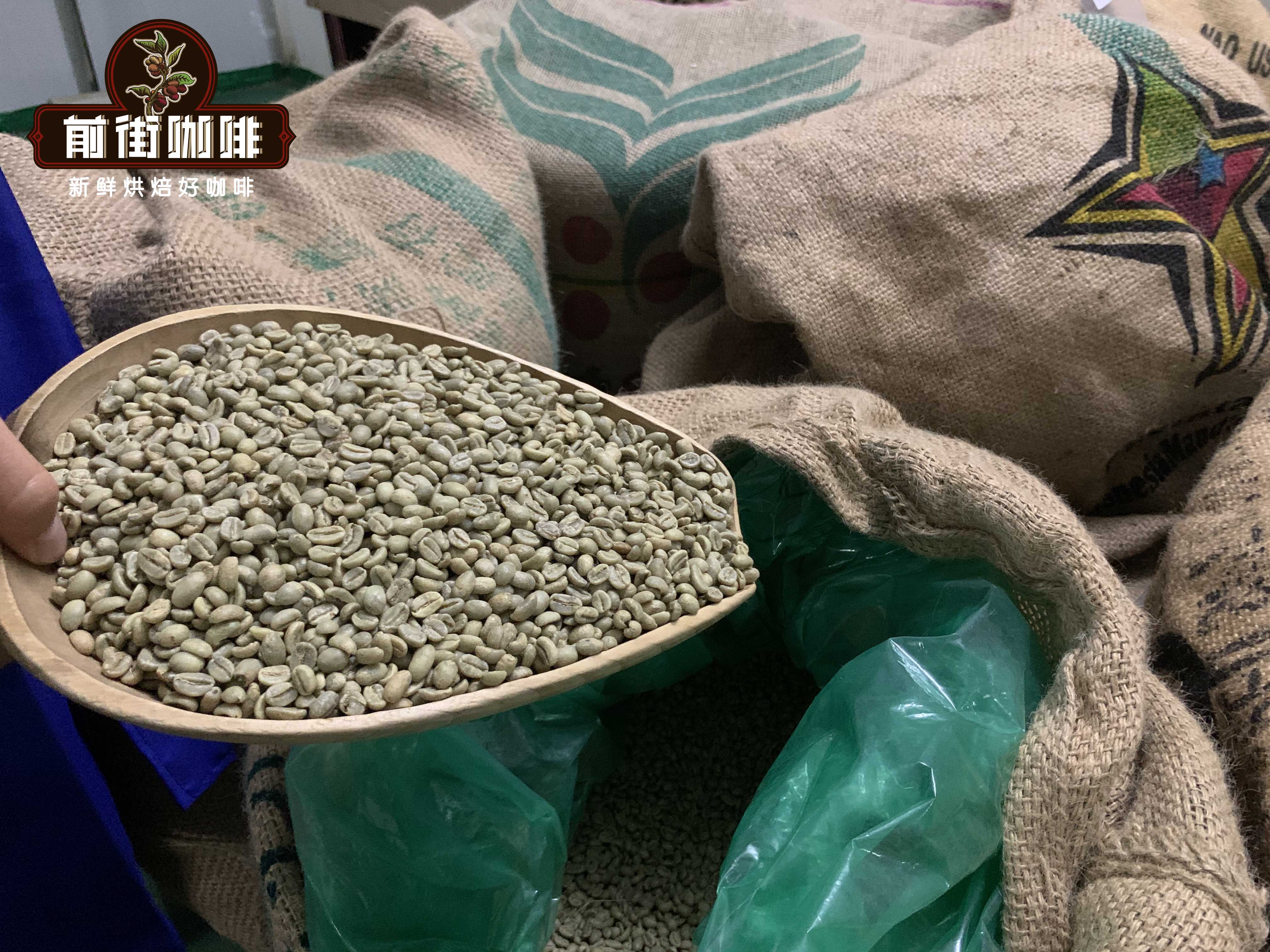
1. Suitable for a large number of commercial operations (this method is often used in Brazil), half-sun treatment is relatively simple and easy to operate, which can save water and protect the environment, saving time and effort to select relatively delicate commercial coffee beans.
two。 In the process of removing the pulp of coffee peel, the ripe pulp will be removed easily, and the immature green fruit skin is not easy to dispose of, so a second screening can be carried out to filter the immature fruit and unify the maturity of coffee fruit. Compared with the sun drying method, the cleanliness and maturity of the selected coffee fruit will be improved, resulting in a more uniform taste of coffee.
3. The drying time will be shortened, time cost will be saved, and more added value will be added.
4. The maturity is relatively consistent, which is more conducive to preserving and unifying the raw bean quality of coffee.
Disadvantages of half-sun method:
1. The drying process is vulnerable to pollution and mildew.
two。 The whole process needs to be closely watched and constantly turned over.
3. Speed up the drying to avoid bad fermentation smell.
The above is the relevant content about Brazilian half-sun treatment of Qianjie coffee. Two good Brazilian coffee beans have also been introduced into Qianjie coffee shop. Here is an introduction for you!
Front Street Coffee Brazilian Syrador Red bourbon Coffee beans
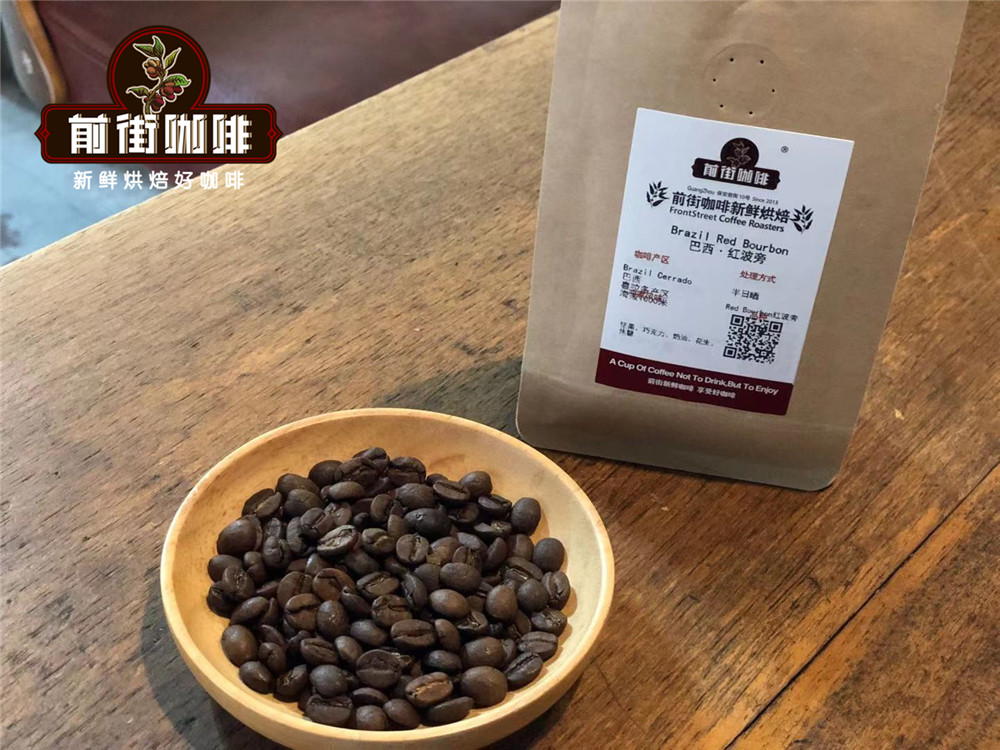
Country: Brazil
Producing area: South Minas
Altitude: 1000m
Variety: red bourbon
Treatment: half-sun
Flavor: nut chocolate cream peanut caramel.
The Brazilian red bourbon coffee introduced by Qianjie Coffee comes from Syrador, a prairie that accounts for 22% of the total area of Brazil, deep in the interior of Brazil, and Cerrado means "closed land" in Portuguese. The Hiladow Prairie begins in Mato Grosso, Mato Grosso province in southwestern Brazil, through the west-central part of Minas and north to the western part of Bahia province. The Shirado coffee producing area referred to in Qianjie is not the entire Hirado prairie, but only in coffee growing areas above 1000 meters above sea level in the central and western part of Minas province.
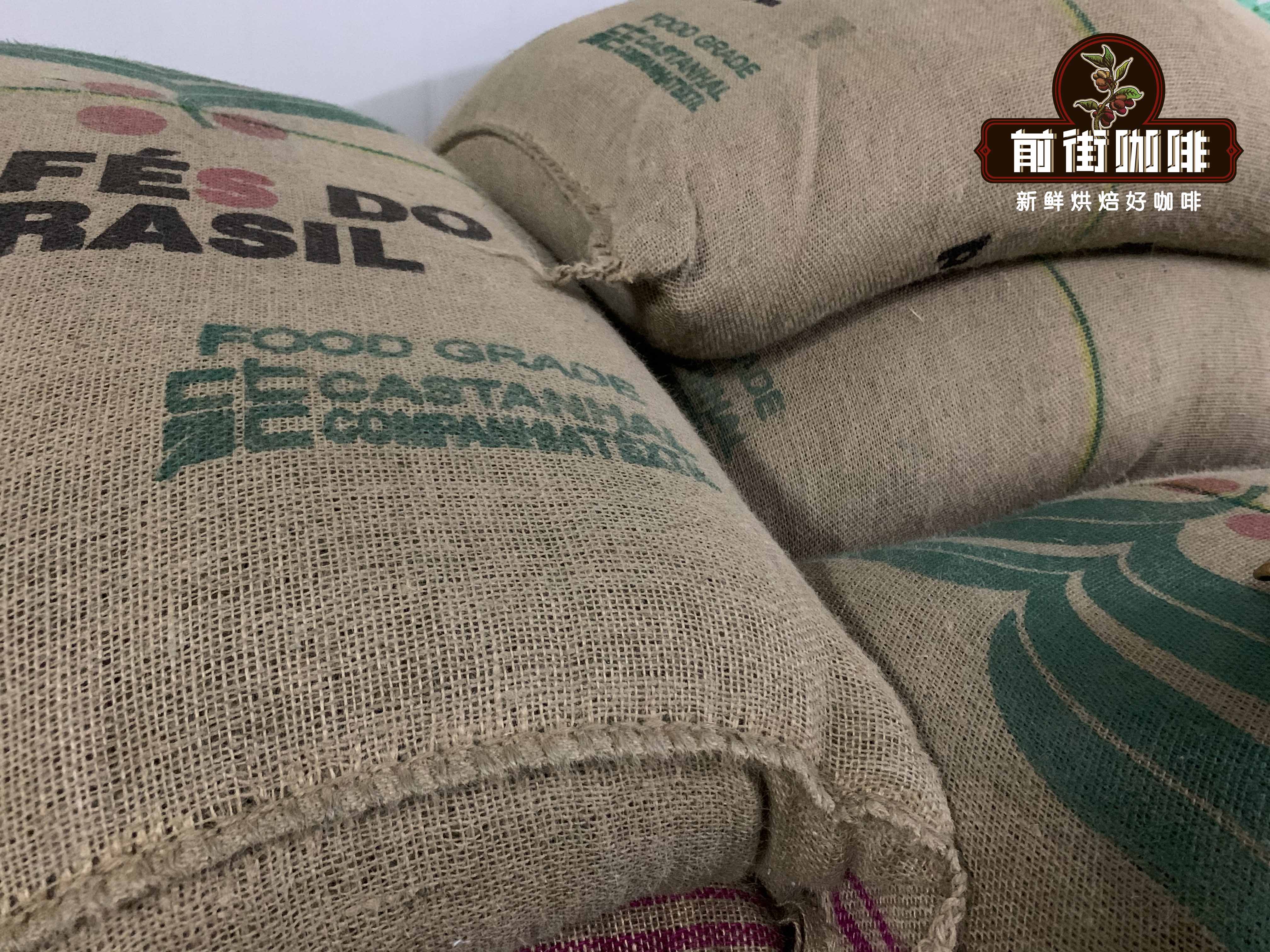
And this area is the essence of the Hirado prairie, high altitude, fertile soil, to grow sweet, mellow thickness and high cleanliness of high-quality coffee beans. So Qianjie Coffee will taste the coffee beans from this producing area as the rations beans that represent the coffee flavor of the Brazilian producing areas.
Front Street Coffee Brazilian Queen Manor Coffee beans
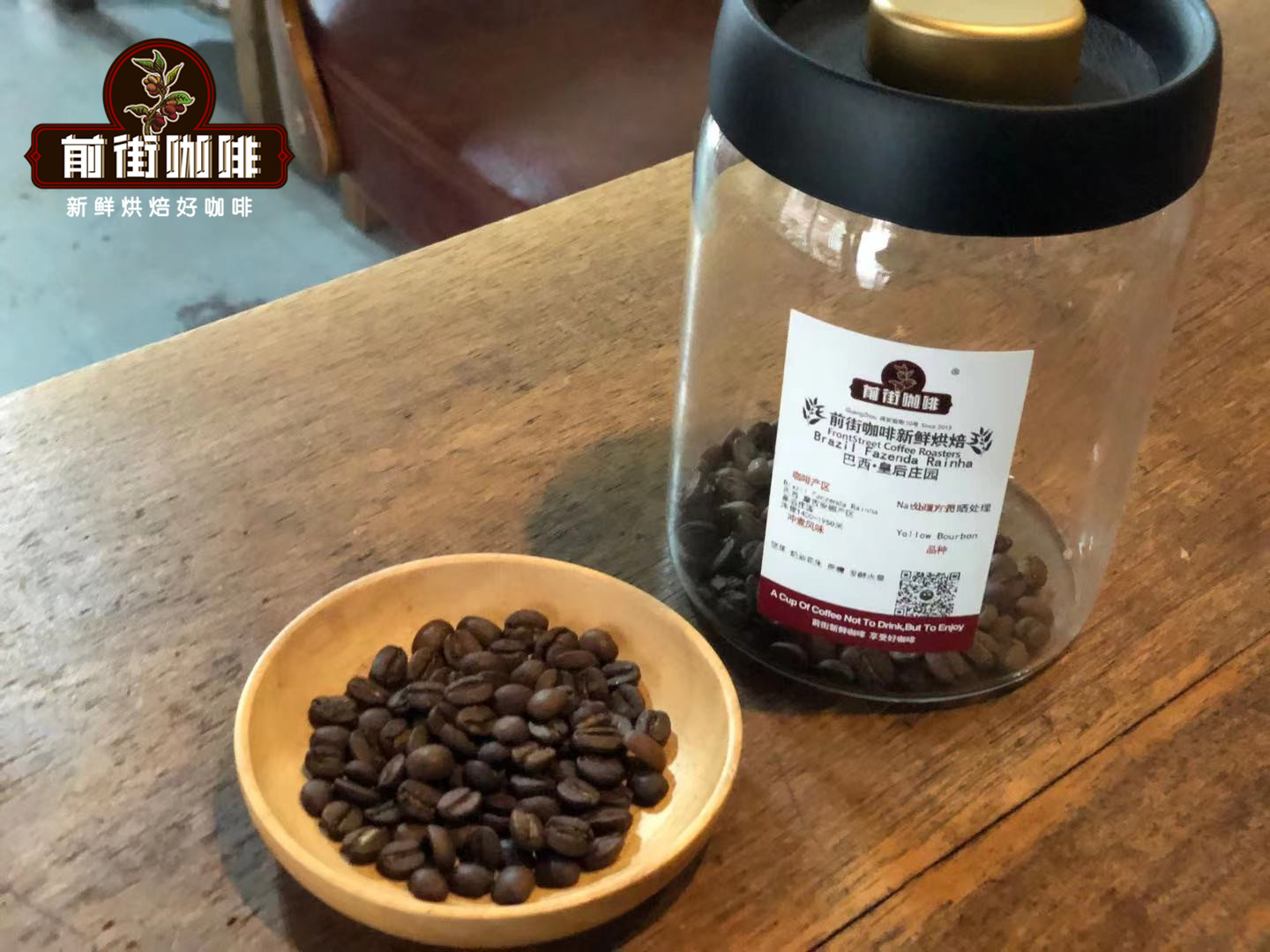
Country: Brazil
Producing area: Sao Paulo State (Queen's Manor)
Altitude: 1400-1950m
Variety: yellow bourbon
Treatment method: half sun / sun exposure
Flavor: nuts, cream, peanuts, fermented fruit, sugar.
Qianjie Coffee is no stranger to the coffee beans of Brazil's Queen's Manor, which is located in the Alta Mogiana area of the state of Sao Paulo, north of the city of Sao Paulo. The estate is well-known in Brazil and is owned by the Carvalho Dias family. Carvalho Dias has four estates that have won awards every year since the first Brazilian COE Competition in 1999, winning more than 12 awards in the past seven years, and even won the champion, 9th and 11th in 2004. This is enough to prove the strength of the manor.
These are the Brazilian coffee beans introduced in the Qianjie coffee shop, and Qianjie coffee does a lot of hand tests before each new bean is put on the shelf, in order to flush out the original flavor of the coffee beans. Then Qianjie Coffee will share with you the hand brewing parameters of these two Brazilian coffee beans.
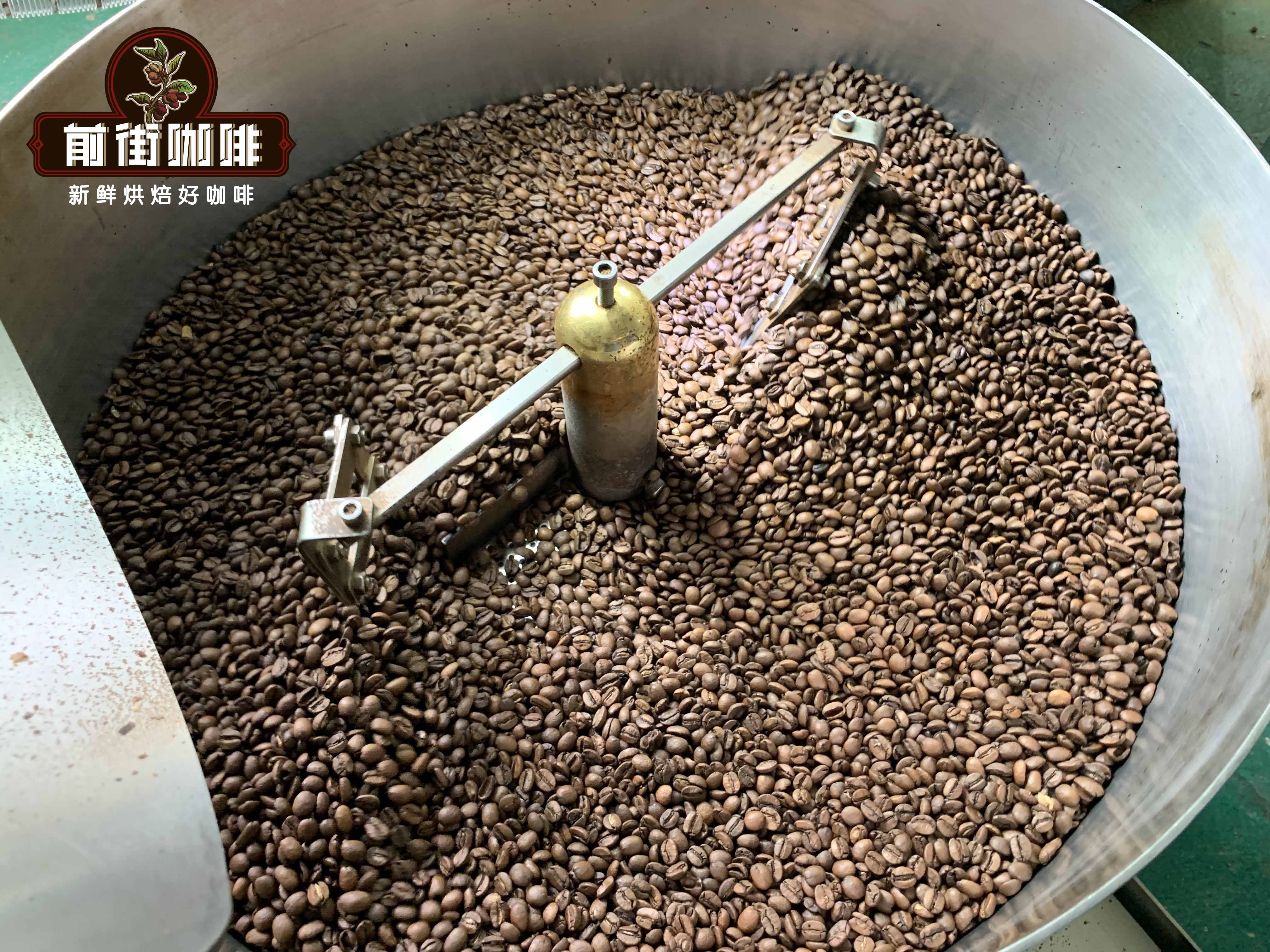
Hand brewing parameters of Brazilian coffee beans
Qianjie Coffee above two Brazilian coffee beans, these two coffee beans are moderately roasted, and both are coffee beans from the same producing area, so the coffee flavor will not be very different, so the hand brewing parameters of Qianjie coffee are the same.
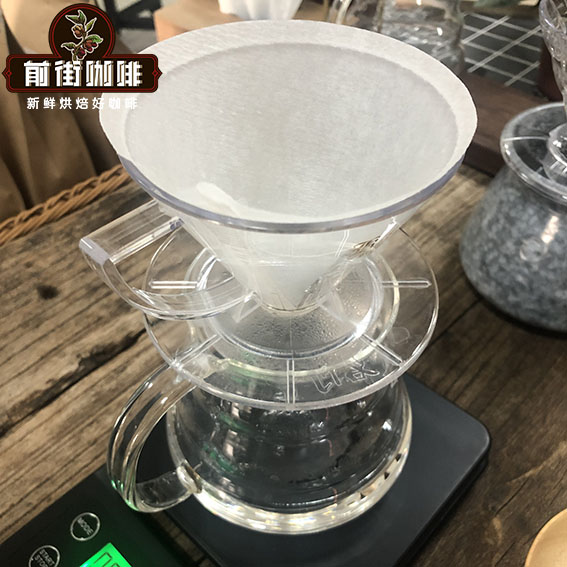
Filter cup: KONO
Powder content: 15g
Water temperature: 90 ℃
Degree of grinding: medium grinding, pass rate of No. 20 standard screen 75%
Gouache ratio: 1:15
Flushing and cooking technique: segmented extraction.
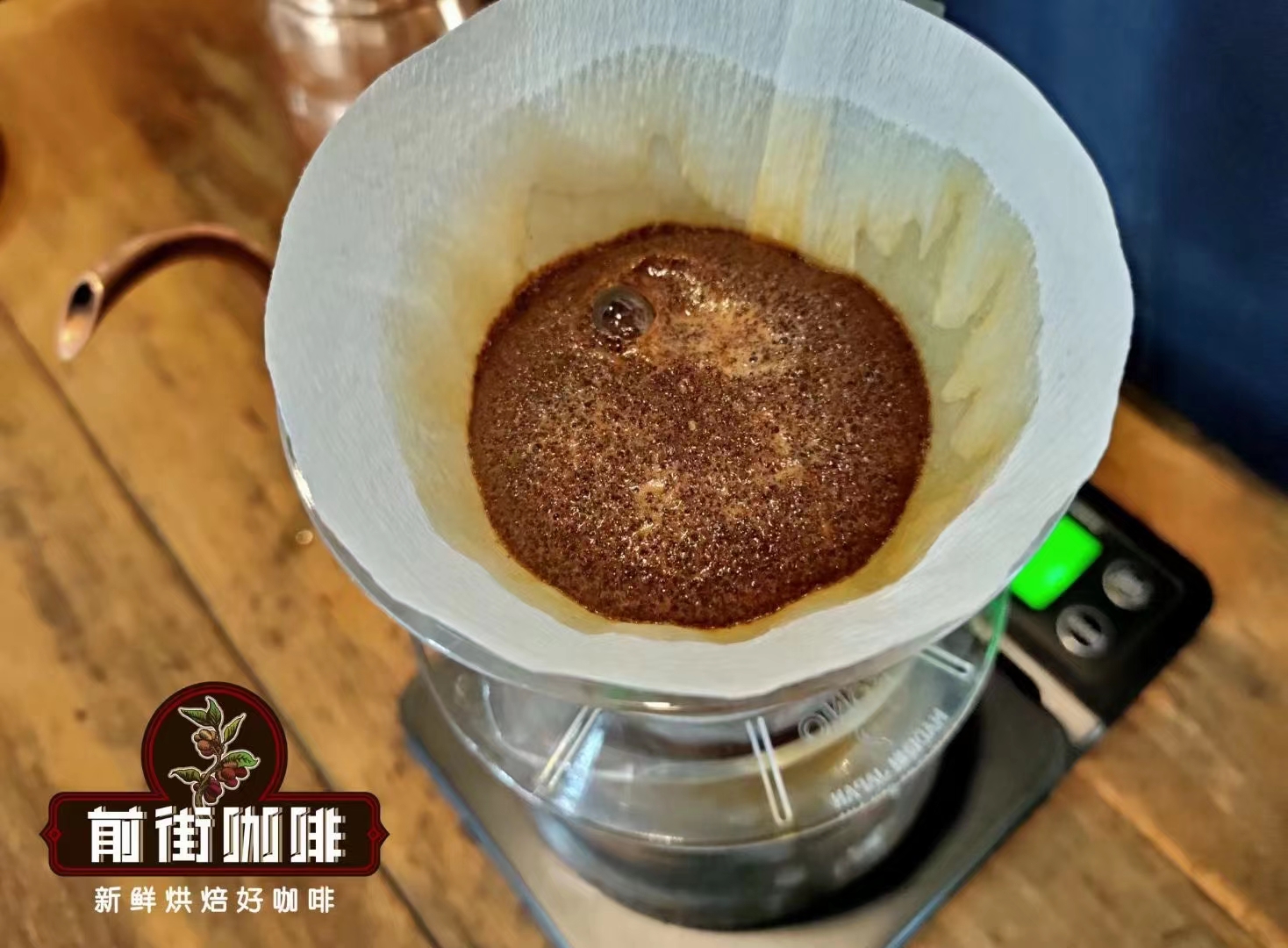
Steam with 30 grams of water for 30 seconds, small water flow around the circle to 125g water injection stages, water level drop is about to expose the powder bed, continue to water injection to 225g to stop water injection, and so water level drop is about to expose the powder bed to remove the filter cup, (steaming starts timing) V60 filter cup extraction time is 2cm 39010 ", Kono filter cup extraction time is slightly longer.
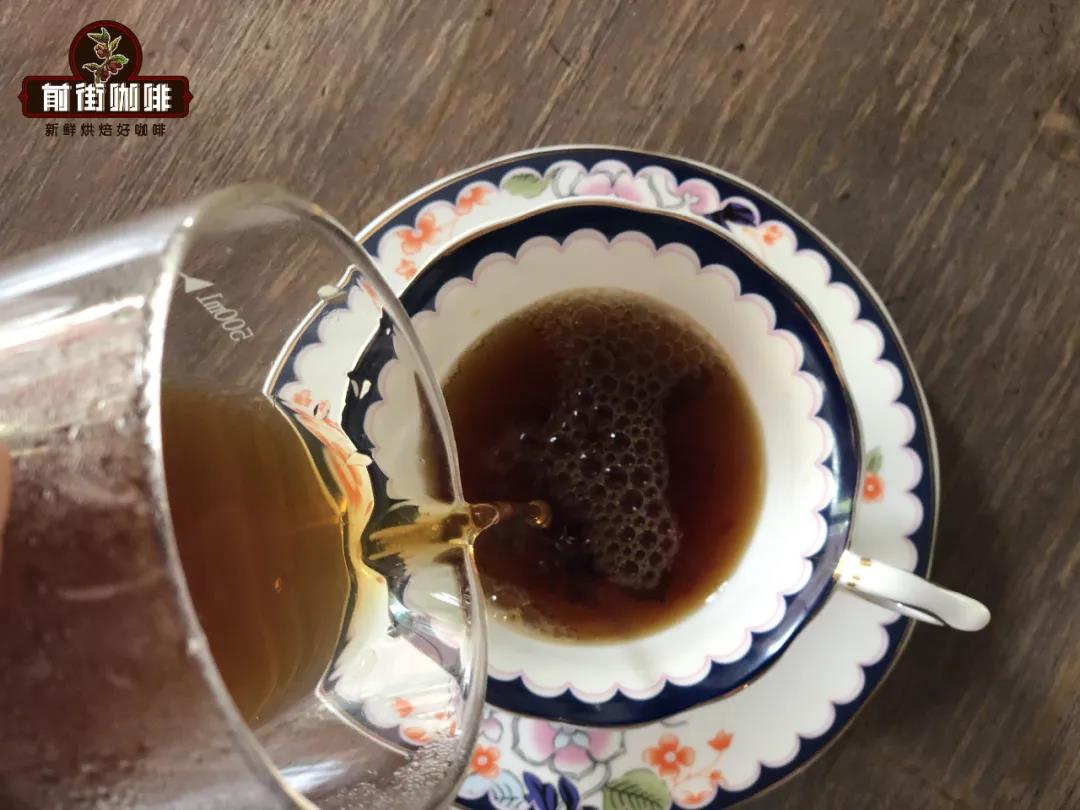
Brazilian Hilado coffee bean flavor: the entrance has obvious sweetness, with a hint of lemon aroma, with a strong nutty flavor, the latter part of the performance has an obvious dark chocolate flavor, the overall feeling is more round.
Brazilian Queen's Manor Coffee Bean flavor: taste balanced, in the main tone of almond cocoa, highlight the sweetness of sugar, is a full, sweet coffee.
For more boutique coffee beans, please add private Qianjie coffee on Wechat. WeChat account: kaixinguoguo0925
Important Notice :
前街咖啡 FrontStreet Coffee has moved to new addredd:
FrontStreet Coffee Address: 315,Donghua East Road,GuangZhou
Tel:020 38364473
- Prev
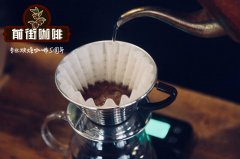
What are the individual coffee beans in Colombia | Hope Manor nectar Rose Summer / Geisha Coffee
Professional coffee knowledge exchange more coffee bean information please follow the coffee workshop (Wechat official account cafe_style) front street coffee geisha coffee-Panama blue standard Colombia La Esperanza Geisha Kamitsu Honey Colombia hope manor 100% rosy summer / geisha [nectar] honey treatment flavor description: dry fragrance for blueberries, peaches,
- Next
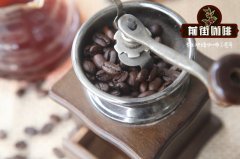
Brazilian single Coffee | South Minas producing area | Gaojing Manor | Yellow Bourbon peeled and sunburned
Professional coffee knowledge exchange more coffee bean information please follow the coffee workshop (Wechat official account cafe_style) front street Brazilian single coffee-Queen Manor Yellow Bourbon peeling Sun (PN treatment) Product name: South Minas Gaojing Manor Yellow Bourbon peeling Sun (PN treatment) (Brazil Carmo de Minas Fazenda Alta Vista Pulp treatment)
Related
- Does Rose Summer choose Blue, Green or Red? Detailed explanation of Rose Summer Coffee plots and Classification in Panamanian Jade Manor
- What is the difference between the origin, producing area, processing plant, cooperative and manor of coffee beans?
- How fine does the espresso powder fit? how to grind the espresso?
- Sca coffee roasting degree color card coffee roasting degree 8 roasting color values what do you mean?
- The practice of lattes: how to make lattes at home
- Introduction to Indonesian Fine Coffee beans-- Java Coffee producing area of Indonesian Arabica Coffee
- How much will the flavor of light and medium roasted rose summer be expressed? What baking level is rose summer suitable for?
- Introduction to the characteristics of washing, sun-drying or wet-planing coffee commonly used in Mantenin, Indonesia
- Price characteristics of Arabica Coffee Bean Starbucks introduction to Manning Coffee Bean Taste producing area Variety Manor
- What is the authentic Yega flavor? What are the flavor characteristics of the really excellent Yejasuffi coffee beans?

